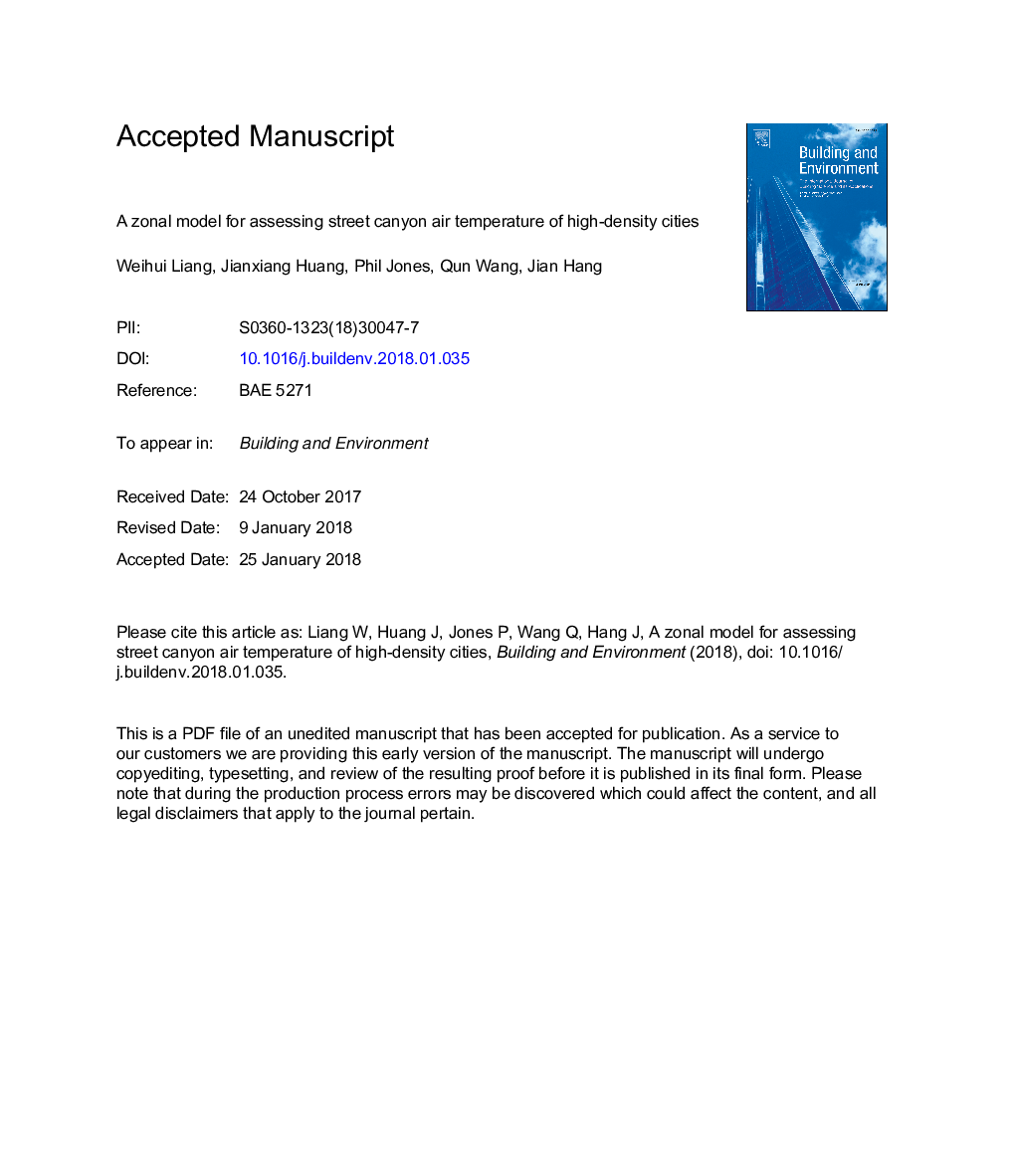| کد مقاله | کد نشریه | سال انتشار | مقاله انگلیسی | نسخه تمام متن |
|---|---|---|---|---|
| 6697880 | 1428360 | 2018 | 35 صفحه PDF | دانلود رایگان |
عنوان انگلیسی مقاله ISI
A zonal model for assessing street canyon air temperature of high-density cities
ترجمه فارسی عنوان
مدل منطقه ای برای ارزیابی دمای هوای خیابانی خیابان در شهرهای با تراکم بالا
دانلود مقاله + سفارش ترجمه
دانلود مقاله ISI انگلیسی
رایگان برای ایرانیان
کلمات کلیدی
مدل زون جزیره گرمایی شهری، دمای هوای خیابانی خیابان، میکرو کلم سایت ماکت
موضوعات مرتبط
مهندسی و علوم پایه
مهندسی انرژی
انرژی های تجدید پذیر، توسعه پایدار و محیط زیست
چکیده انگلیسی
The microclimate of a high-density city affects building energy consumption and thermal comfort. Despite the practical needs in building design and urban planning to predict conditions inside street canyons, literature is sparse for physics-based models that can support early stage design. Existing tools such as the Computational Fluid Dynamics (CFD) method is computationally expensive and cannot easily be coupled with other simulation models to account for solar heat gains at urban surfaces and anthropogenic heat from traffic and building HVAC systems. This paper describes a zonal model developed to assess airflow and air temperature in street canyons in high-density cities. The model takes into account 3D urban geometries, external wind, buoyancy, convective heat transfers from urban surfaces; it can simulate zonal air temperature, pressure, and airflow patterns by interactively solving mass, pressure and energy balance equations. The model was evaluated using field measurement on a 'mock-up' site consisted of movable concrete bins mimicking buildings and street canyons in high-density cities. Experiments were conducted on 3 alternative street layouts of various height-to-width aspect ratios: moderate (H/Wâ¯=â¯1), dense (H/Wâ¯=â¯2), and high-density (H/Wâ¯=â¯3). Agreements between predicted and measured air temperatures were satisfactory across 3 layouts (RMSE < 0.0041). Temperature differences between simulated and measured results were largely within 1â¯K. The model can provide a reliable and quick assessment of the impact of street canyons on urban heat island (UHI) in high-density cities. The next step is to couple this model with building energy models.
ناشر
Database: Elsevier - ScienceDirect (ساینس دایرکت)
Journal: Building and Environment - Volume 132, 15 March 2018, Pages 160-169
Journal: Building and Environment - Volume 132, 15 March 2018, Pages 160-169
نویسندگان
Weihui Liang, Jianxiang Huang, Phil Jones, Qun Wang, Jian Hang,
